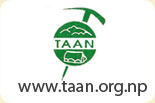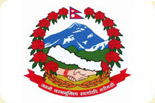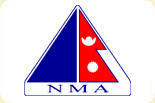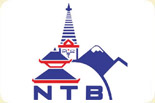- Trekking in Nepal
- Paragliding in Nepal
- Peak Climbing in Nepal
- Flight Reservation in Nepal
- Trekking Peak climbing in Nepal
- Bunjee Jumping in Nepal
- High Pass (ADVENTURE) Trek
- Hostel Accommodatin
- Hotel Accommodation in Nepal
- Jungle Safari in Nepal
- Mountain Bike in Nepal
- Travel / Tour in Nepal
- Vehicle Hire Service
High Pass (ADVENTURE) Trek : Kangla & Mesokantala Trekking Pass
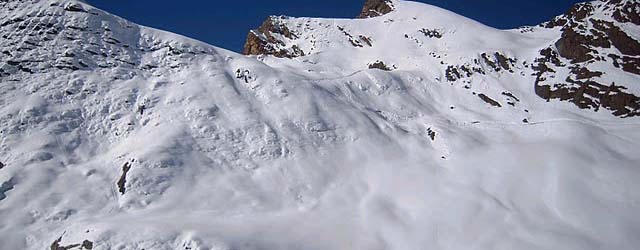 Kang La 5320m isn't all that difficult in good conditions, thought it can be treacherous in bad weather or if there's a lot of snow. You can expect snow and ice as late September, but the trail is generally kept clear by convoys of yaks and trekking gro
Kang La 5320m isn't all that difficult in good conditions, thought it can be treacherous in bad weather or if there's a lot of snow. You can expect snow and ice as late September, but the trail is generally kept clear by convoys of yaks and trekking gro| Duration - 22 | Max Altitude: 5320m |
| Trek Name: Kangla & Mesokantala Trekking Pass Trek Code: CP 10 |
Max Group Size: No Limits |
| Cost: Depend on Numbers | |
I would introduce you first PHU AND NAR village before Kang-La Pass. Please read continually:
NAR VILLAGE: Nar (place of the Blue Sheep) is larger than Phu village, with around 65 house stacked inters around a smattering of prayer wheels and small chapels. Electricity and phone lines mar the look of the traditional village, which is a particular shame as they currently don't ever work. Views of Kang Guru and Pisang dominate the horizon. The local inhabitants (Narpas) run the gamut from old herders in robes and traditional Tibetan boots to young guns decked out in ponytails and Ray Bans.
The village's four Kagyud gompas are worth a visit, though tracking down the keys from the four different caretakers can eat up a large chunk of the day. Photos of the current (16th) Karmapa are common if Nar (the Karmapa fled Tibet in 1999, traveling to India via Mustang and Manang). The Guru Choling Gompa is at the top of town, the lower Samten Pelgye Ling has some remarkable old statutes, and the Kunsel Denchen a large Phallus painted on the wall and an unusual off-center floor plan. The newest monastery is the Samdru Choling, just below the Shanti Lodge. If you are not able to cross the Kang La or decide not to, it's possible to hike down or Koto in a long day.
PHU VILLAGE: PHU is and extraordinary village of around 40 households piled up on a bluff at the junction of a side valley. Upper village offers four beds in a simple mud walled room, with meals eaten in the traditional kitchen. You may have to ask around fro the owner Tashi Khandru; look for the multicolored windows. There are no formal shops in Phu but you can buy at Tashi's and will be well fed on porridge, soup and Dal BHAT (Nepali main meal). All supplies are carried here by mule. Devote some time to exploring the fascinating village. The deserted and crumbling uppermost section is home to the original fortified residence. Phu means 'Head of the Valley' and the 6364, pyramid-shaped peak to the north is named Bhrikuti the Nepali wife of Tibetan King Songtsen Gampo; beyond is Tibet. Phu village is snowbound and almost completely deserted in winter (December to March).
Nar - Phu's most important monastery is the Tashi Lhakhang Gompa (4150m), crowning a hillside cut by two rivers to the north of thrown. One of the three resident ani (nuns) will show you around the main prayer hall, adorned with some fine ceremonial trumpets and photos of the current Karmapa (the monastery was founded by the 10th Karmapa). Look for the festival mask of the god Dorje Drolo. There is no entry fee so leave a donation. Other rooms include the quarters of lama Karma Sonam Rinpoche, a famous amchi (traditional healer) who fled Tibet with the Dalai Lama and who now lives in Kathamndu. Also here is a library, protector chapel and a menkhang (apothecary), lined with jars or herbs, potions and antibiotics. A fine kora (pilgrim path) leads up past blue painted mani stones and back down to the lama's helipad, offering excellent views of Phu.
The similar Samtenling Gompa above the village in normally closed. There are more good village views from the bluff to the south of the village, up the steep goat track that leads to Ubi village. If you have time and budget and extra day in Phu (highly recommended), consider a hike up to either the summer Pastures of Ngoru Kharka or Himlung Base Camp. For views of Hmlung 7125m, you can follow the Yak trail into the moraine but the base camp, itself follow the streamside trail that squeezes between the hillside and the moraine.
After leaving Nar through the village Kani and take the gradual path up through the valley, with Pisang Peak and its razorback ridge to your left. Traverse Yak pastures after one hour, then contour around a hill and descend to the head of the valley. There is a small ACAP camp site here ate Jhambu Kharka, also known as KANG LA PHEDI 4620m or Kangla base camp.
KANG LA PASS: 5320m isn't all that difficult in good conditions, thought it can be treacherous in bad weather or if there's a lot of snow. You can expect snow and ice as late as September, but the trail is generally kept clear by convoys of yaks and trekking groups. Its best tackle the pass early in the morning, before the ice metals and it becomes slippery.
Cross a stream on a log bridge and climb steeply on a Z shaped path to a chorten, before curving into the ridge ahead. Cross the river to its true right side and ascend the steep switchbacks up to a cairn. The climb begins in earnest here, up a steep but well graded trail on a mix of snow, ice and yak dung. A second cairn (4900m) offers fine views over Pisang Peak and the Nar valley below you. About two hours from Kang La Phedi you will pass to the right of a small half frozen lake as the trail curves to the left. The final half house push zigzags to the top of a razor-sharp ridge at the Kang La 5320m; N 28 degree 41.307', E 84 degree07.456), marked by a large cairn. Mt. Gangapurna, Annapurna II Tilicho Peaks, Hongde airstrip, Sherpa people and their rich culture of Nar Phu villages are main views from here.
| Itinerary: | |
|
|
| Trips Start Dates: | |
| January / February / March / April / May / September / October / November / December |
|
| Included in your trip: | |
Camping Trek organised.
|
|
| Not included: | |
|
|
| Book Trip Now |






